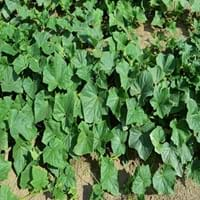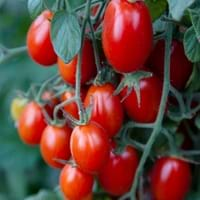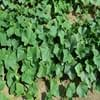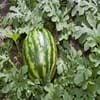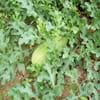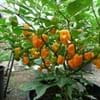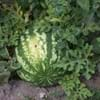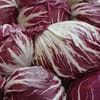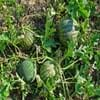What is
Life Span
Annual
Annual and Perennial
Type
Vegetable
Vegetable
Origin
Southern Asia
Mexico, Central America, South America
Types
Slicing, Pickling and burpless
Cherry tomato, Beefsteak tomato, Medium tomato
Number of Varieties
3
99+
Not Available
Habitat
Floodplains, Wet forest
Loamy soils, Shaded sites
USDA Hardiness Zone
7-8
11-15
AHS Heat Zone
12-1
12-1
Sunset Zone
A3, H1, H2, 1a, 1b, 2a, 2b, 3a, 3b, 4, 5, 6, 7, 8, 9, 10, 11, 12, 13, 14, 15, 16, 17, 18, 19, 20, 21, 22, 23, 24
A1, A2, A3, H1, H2, 1a, 1b, 2a, 2b, 3a, 3b, 4, 5, 6, 7, 8, 9, 10, 11, 12, 13, 14, 15, 16, 17, 18, 19, 20, 21, 22, 23, 24
Habit
Vining/Climbing
Vining/Climbing
Information
Plant Size
Minimum Height
15.20 cm
99+
30.00 cm
99+
Minimum Width
180.00 cm
99+
30.00 cm
99+
Plant Color
Flower Color
Yellow, Gold
Yellow
Flower Color Modifier
Bicolor
Bicolor
Fruit Color
Green
Red
Leaf Color in Spring
Light Green
Green, Dark Green
Leaf Color in Summer
Green, Dark Green
Green, Dark Green
Leaf Color in Fall
Green, Dark Green, Yellow green
Green, Dark Green
Leaf Color in Winter
Not Available
Green, Dark Green
Shape
Leaf Shape
Heart-shaped
Elliptic, toothed
Thorns
No
No
Season
Plant Season
Summer, Fall
Spring, Summer, Fall
Growing Conditions
Sunlight
Full Sun, Partial Sun
Full Sun
Growth Rate
Very Fast
Fast
Type of Soil
Loam
Loam, Sand
The pH of Soil
Neutral
Neutral
Soil Drainage
Well drained
Well drained
Bloom Time
Early Summer, Summer, Late Summer, Early Fall, Indeterminate
Indeterminate
Repeat Bloomer
Yes
Yes
Tolerances
Drought
Drought
Care
Where to Plant?
Container, Ground
Container, Ground, Pot
How to Plant?
Seedlings, Stem Planting
Seedlings, Transplanting
Plant Maintenance
Medium
Medium
Watering Plants
Watering Requirements
Keep ground moist, Requires a lot of watering, Requires regular watering, Requires watering in the growing season
Allow to dry out slightly between watering, Do not water the foliage, Needs 2-3 times watering per week
In Summer
Lots of watering
Lots of watering
In Spring
Moderate
Moderate
In Winter
Average Water
Average Water
Soil
Soil pH
Neutral
Neutral
Soil Type
Loam
Loam, Sand
Soil Drainage Capacity
Well drained
Well drained
Sun Exposure
Full Sun, Partial Sun
Full Sun
Pruning
Remove damaged leaves, Remove dead leaves, Remove shoots
Remove damaged leaves, Remove dead branches, Remove dead leaves, Remove short branches, Remove short twigs
Fertilizers
All-Purpose Liquid Fertilizer, Compost, organic fertlizers
Apply 5-10-5 amounts
Pests and Diseases
Anthracnose, Bacteria wilt, Downy mildew, Fungal Diseases, fungus, Fusarium wilt, Leaf spot
Red blotch
Plant Tolerance
Cold climate
Drought
Facts
Flowers
Showy
Showy
Flower Petal Number
Single
Single
Fruits
Showy Fruit
Yes
Yes
Edible Fruit
Yes
Yes
Fragrance
Fragrant Flower
Yes
Yes
Fragrant Fruit
No
Yes
Fragrant Leaf
No
Yes
Fragrant Bark/Stem
No
Yes
Showy Foliage
No
No
Showy Bark
No
No
Foliage Texture
Coarse
Medium
Foliage Sheen
Matte
Matte
Evergreen
No
No
Invasive
No
No
Self-Sowing
Yes
Yes
Attracts
Ants, Birds, Flying insects, Insects, Rats, Squirrels
Aphids, Bees, Butterflies, Mosquitos
Allergy
Throat itching
Diarrhea, gastro-intestinal problems, Headache, Itchiness, Vomiting
Benefits
Uses
Aesthetic Uses
Showy Purposes
As decorated salad
Beauty Benefits
Not Available
Acne, Glowing Skin, Maintains teeth healthy
Edible Uses
Yes
Yes
Environmental Uses
Air purification, Food for animals, Food for birds, Food for insects
Air purification
Plant Benefits
Medicinal Uses
anti-cancer, Anti-oxidant, Antioxidants, Combats Stress, Improve heart health, Indigestion, Inflammation
Antioxidants, Metabolism
Part of Plant Used
Fruits, Seeds
Fruits, Leaves
Other Uses
Used As Food, Used as Ornamental plant, Used for its medicinal properties
Cosmetics, Culinary use, For making oil, Repellent
Used As Indoor Plant
Yes
Sometimes
Used As Outdoor Plant
Yes
Yes
Garden Design
Edible, Herb / Vegetable, Vine
Container, Edible, Herb, Vegetable
Scientific Name
Botanical Name
CUCUMIS sativus 'Diva'
LYCOPERSICON esculentum var cerasiforme 'Grape'
Common Name
Cucumber
Grape tomato
In Hindi
खीरा
अंगूर टमाटर
In German
Gurke
Traube Tomate
In French
concombre
tomate uva
In Spanish
Pepino
tomate uva
In Greek
αγγούρι
ντομάτα σταφυλιών
In Portuguese
pepino
tomate uva
In Polish
ogórek
pomidorowa z winogro
In Latin
cucumeris
uva tomatoes
Classification
Kingdom
Plantae
Plantae
Phylum
Tracheophyta
Magnoliophyta
Class
Magnoliopsida
Magnoliopsida
Order
Cucurbitales
Solanales
Family
Cucurbitaceae
Solanaceae
Genus
Cucumis
Solanum
Clade
Angiosperms, Eudicots, Rosids
Angiosperms, Asterids, Eudicots
Tribe
Melothrieae
Solaneae
Subfamily
Cucurbitoideae
Solanoideae
Number of Species
Not Available
Not Available
|
||
|
||
|
